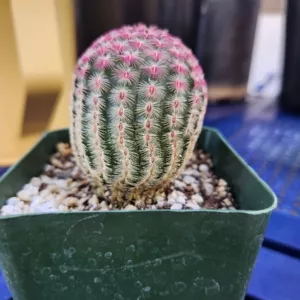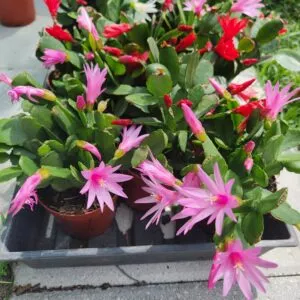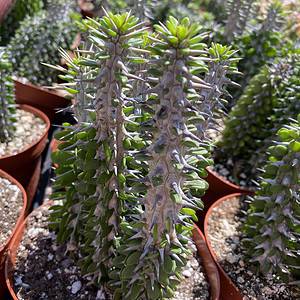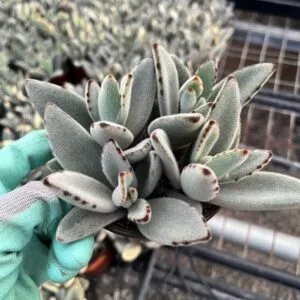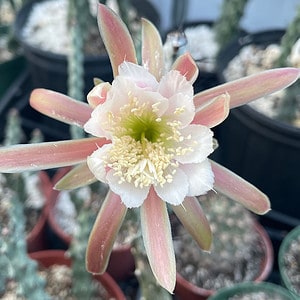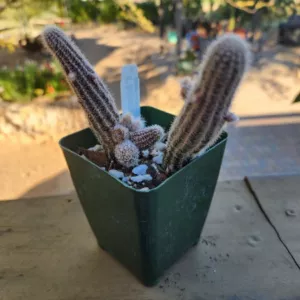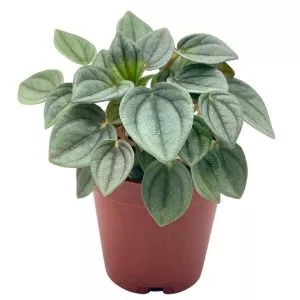No products in the cart.
Table of Contents
Many people face black spots on cactus plants, but stress is unnecessary. You see the black spots covering the whole plant, but you can treat it if you know the cause. So, let’s look at what causes black spots on the cactus.
Causes of Black Spots on Cactus Plants and How to Treat Them

But before we can treat the black spot problem, we must determine the cause. These black spots can affect the overall health of your plant and its appearance. The typical reason is fungal and bacterial diseases.
Still, there are other reasons why your cactus plant gets black spots. A cactus plant will start crying out for help once you notice brown spots, and then it turns black. The truth is that the problem began internally and has been around for a while.
You are now seeing the damage spread externally to notify you there is a problem.
Fungal and Bacterial Diseases
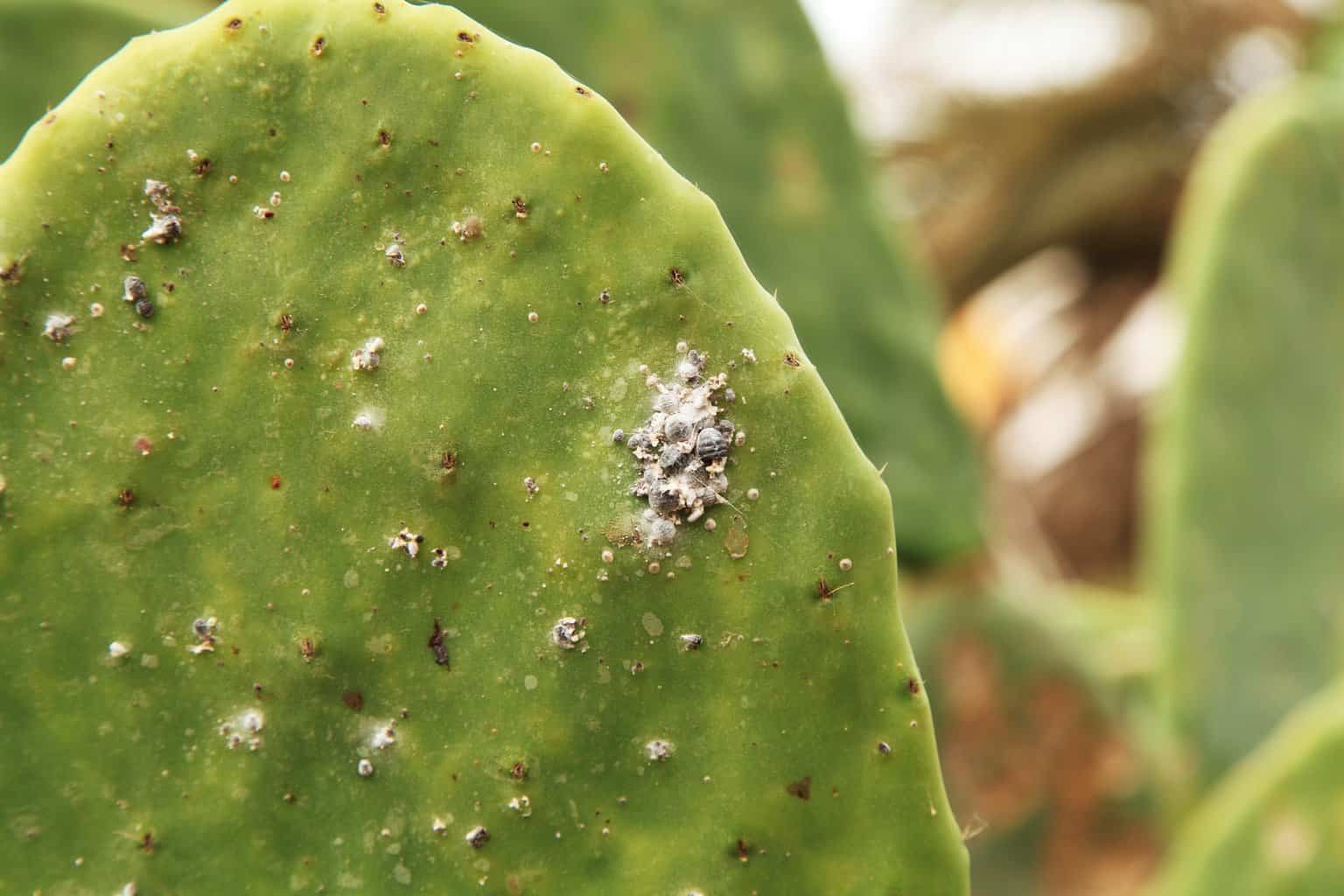
Fungi typically penetrate through wounds found in your plant using contaminated hands or shears that are not sterilized. Yet, no specific fungus type causes the problems, and you see multiple fungi. The same applies to bacteria. Here are some of them and how to treat fungal diseases and bacteria.
Bacterial Necrosis Penetrates Through the Plant Tissue
You may not need to worry about bacterial necrosis when you grow your cactus alongside other houseplants in your indoor garden. It mainly attacks certain cacti species like your barrel cactus, organ pipe, cholla, prickly pears, and saguaro cactus.
Hence, bacterial necrosis is triggered by the Erwinia bacteria, named after a well-known plant pathologist Erwin Frink Smith. It needs a branch or trunk wound to penetrate the healthy tissue.
What happens is that necrotic pockets form on areas of plant tissues that die. The disease travels through these pockets as those areas are weak. Still, you may not notice it in your plant species, like the saguaro cactus. All you see are the patches becoming cork-like.
The sign is your infected cactus is trying to self-heal, but those areas still have bacteria that spread further. The areas eventually turn from brown to black, resulting in your plant rotting away.
Eventually, it cracks, resulting in a dark brown liquid oozing out of the cactus pads. The good news is that cactus disease is treatable, but you must catch it early.
Only 1 left in stock In stock Only 1 left in stock In stock
$10.00
Sold By:
Stripes and Variegations
Arizona Rainbow Rainbow Hedgehog Cactus
Sold By:
Stripes and Variegations
$20.00
Sold By:
PotHedz Plants
Easter Cactus
Rated 4.96 out of 5 based on 106 customer ratings00
Sold By:
PotHedz Plants
$10.00
Sold By:
Stripes and Variegations
Paper spine cactus or Pinecone Cactus
Sold By:
Stripes and Variegations
$31.99
Sold By:
Succulent Oasis
False Ocotillo Cactus
Rated 4.84 out of 5 based on 352 customer ratings00
Sold By:
Succulent Oasis
treating the fungal infection
Treat the cactus plants with bacterial necrosis manually, as no chemicals can combat it. Yet, you must remove and clean the infected parts to prevent spreading.
Furthermore, destroy the removed parts and do not add them to your compost. Another concern is bacterial necrosis, which also lives in the soil around the plant. So, you must sterilize all your tools and arm yourself with thick gloves.
Cut at least 1/2 an inch around the infested area with a sharp knife. Keep dipping the knife into bleach and water solution ratio of 1:9. Also, cut at an angle, allowing the water to drain.
Then rinse the hole with the bleach to deaden the pathogen remaining and leave the hole open to dry. In some rare cases, if the bacteria encircle your whole plant, then the best is to remove and destroy the plant.
Crown Rot

The following cactus disease that can cause black spots on the cactus is crown rot. The problem is crown rot affects all other plants. It can make indoor plants and vegetable plants sick. These fungal diseases are also called crown rot disease.
It is a soil-borne fungus that wreaks havoc on your outdoor plants. When you do not have enough drainage holes or well-draining soil and overwater your plant, it helps the fungus develop. But what makes these fungal and bacterial diseases a concern?
Crown rot is a huge problem in the potting soil, and removing it is impossible. It is one of those diseases that starts subtly and see problem symptoms on the soil line. It will look like dry rotting, and affected areas of the plant turn tan, resulting in dark spots and eventually black.
It has damaged cactus tissues by this time, and younger cacti are at high risk. Still, your adult plants can sadly also die from it in an advanced stage. Furthermore, it will also leak a brown sap.
Only 1 left in stock In stock Only 1 left in stock Only 1 left in stock
$10.00
Sold By:
Stripes and Variegations
Paper spine cactus or Pinecone Cactus
Sold By:
Stripes and Variegations
$12.00
Sold By:
Smoot's Farm
Cactus Bishop’s Cap Hat Astrophytum Myriostigma 3” Pot
Rated 4.89 out of 5 based on 27 customer ratings00
Sold By:
Smoot's Farm
$10.00
Sold By:
Stripes and Variegations
4 inch Variegated Agave Isthmensis / “Dwarf Butterfly Agave
Sold By:
Stripes and Variegations
$15.00
Sold By:
Stripes and Variegations
Monks Hood
Sold By:
Stripes and Variegations
Treating crown and root rot
The treatment for crown rot is similar to root rot when caring for cactus species. Furthermore, it depends if the rot occurs above the ground near the top of the middle of the stem. You can take a sterilized knife to remove and discard the top part if it is on the top section.
Then, study the lower part of the wound to see if you notice dark-spreading tissue or an orange discoloration. If you notice any plant tissue discolored, remove another part a bit lower until you see any tissue without discoloration.
Then, treat the wound with strong sulfur, allowing it to heal as new growth emerges from that section. But if the roots show rot, more drastic measures are needed. First, you need to remove the top section to reroot it.
It will only work if the part is green and healthy, and dispose of the unhealthy part. If you want to use the same pot, clean it well and provide your top section with fresh potting soil.
Then, use some sulfur powder on the wound and leave it callous before planting it. But do not water it straightaway. You can use a division method with your clump cactus plants to save the healthy parts.
Phyllosticta Pad Spotting
Plants like your prickly pear cacti, orchids, aloe, yucca, and agave are susceptible to getting the disease. Two types of fungal infections can affect indoor plants. One is conidia, and the other one is ascospores.
The ascospore is an airborne disease that travels with the wind passing from one plant to another. So, an open window can bring it inside even if you grow your cactus plant indoors without taking it outside.
While conidia transport through the water when watering plants or it rains through an open window, the disease can then pass phyllostica pad spotting to your plant cells. Compared to the other black spots on the cactus, it will only develop spots looking more purple than black.
The fungi form lesions that become bigger, and their shape changes, starting with a circular shape and turning streaky, looking like diamonds. The sickness mostly becomes visible after six weeks.
In stock In stock In stock In stock
$9.00
Sold By:
Cacti and Exotica
Kalanchoe tomentosa—Panda Plant
Rated 4.98 out of 5 based on 59 customer ratings00
Sold By:
Cacti and Exotica
Free Shipping
$9.59
Sold By:
CZ Grain
Giant Danish Holyhock Seeds
Only 886 available and it’s in 1 people’s basket Rated 4.60 out of 5 based on 156 customer ratings00
Sold By:
CZ Grain
$19.95
Sold By:
Orchid Stuff Plus
$24.95A beautiful Royal Palm in a 4 inch pot.
Only 1 available and it’s in 1 people’s basket Rated 5.00 out of 5 based on 1 customer rating00
Sold By:
Orchid Stuff Plus
$18.00
Sold By:
Beauties & Beasts
Cactus – Monvillea spegazzinii
Only 2 available and it’s in 1 people’s basket Rated 4.83 out of 5 based on 24 customer ratings00
Sold By:
Beauties & Beasts
treat cactus with Phyllosticta Pad Spotting as follows
The most affected cacti plants are prickly pear cactus, which damages pads mainly in the lower parts. Still, botanists do not recommend using a fungicide or other treatments for the phyllosticta fungus.
The reason is that bacterial disease is short-acting depending on weather conditions. Therefore, the best control method is to remove the infected cacti parts. You can do this when you notice spots on the cactus with lesions that are an infection risk.
Bag and discard any foliage removed from your plants to prevent spreading. Another important note is to terminate your cactus plants for a while until treated.
Frost Damage

While we have looked at cactus diseases caused by bacteria and fungi, another thing that can make your plant turn black is cold temperatures below freezing point. But, as you know, the cactus loves warm temperatures.
They are desert succulents and do not do well with freezing temperatures. When cactus plants stand in consistent cold weather, it leads to injuries manifesting into black spots that look wet.
As the cactus dries, the pads become crispy yet brittle and fall off as the cold damages the tissue. While frost is not severe, it will take time for your plant to restore. We recommend bringing your plant indoors out of the cold.
Fertilizer Damage
Yes, black spots on cactus plants can result from the chemicals found in fertilizers like iron, zinc, and manganese. The chemicals burn the tissue, resulting in black lesions. It can also result from the runoff of contaminated water.
If you know it results from chemicals, you can treat the affected areas with two parts: milk and water boiled for five minutes and sprayed on the black spots. The milk neutralizes chemicals burning the skin tissue and provides nutrients to promote new growth.
Sun Damage
Too much sun can also cause black spots as it burns the pads. Therefore it helps to provide sun protection for up to a year while recovering. We recommend keeping your cactus out of the direct sun while recovering in a spot with indirect light and watering your plant sparingly, leaving the soil dry between watering.
Pest Damage
Insects can also cause black spots like spider mites, moths, mealybugs, and scales. Quarantine your plant for a few weeks while treating the infestation. We recommend using an insecticidal soap that disrupts the insect’s cell membranes.
It works against most insects, but avoids using it on plants in direct sunlight.
General Steps For Treating Black Spots on Cactus Plants

If you notice any signs of brown to black spots on your cactus, you can do some care steps to save your plant.
First, Isolate Your Plant
Remove your cactus from the other houseplants, as you do not yet know the cause of the problem. The rule applies to any other indoor plant when it gets sick. Bacterial and fungal diseases can spread fast, so removing infected plants is essential.
In stock In stock In stock Only 1 left in stock
$20.00
Sold By:
PotHedz Plants
Easter Cactus
Rated 4.96 out of 5 based on 106 customer ratings00
Sold By:
PotHedz Plants
$31.99
Sold By:
Succulent Oasis
False Ocotillo Cactus
Rated 4.84 out of 5 based on 352 customer ratings00
Sold By:
Succulent Oasis
$12.00
Sold By:
Smoot's Farm
Cactus Bishop’s Cap Hat Astrophytum Myriostigma 3” Pot
Rated 4.89 out of 5 based on 27 customer ratings00
Sold By:
Smoot's Farm
$15.00
Sold By:
Stripes and Variegations
Monks Hood
Sold By:
Stripes and Variegations
Next, Remove Any Damaged Parts
You must stop the disease in its tracks, removing any cactus leaves. Next, sterilize your pruning shears and even a gardening knife and cut at the sections where it is black. During the process, disinfect the tools.
Cut in layered ways to get as far as possible into the cactus leaves, as fungal and bacterial diseases can go deep. First, remove all rotten parts, as it will affect the internal parts of the plant. Then, cut through the brown rims until healthy parts are reached.
Your plant might look like a sieve, but it will have a higher survival rate without the rotting bits to keep your cactus alive.
Freshen Up The Potting Mix

When looking at the crown or root rot, the disease remains in the soil. You can cut away parts of the plant, but you still need to change the potting soil.
Even if unsure about the cause, it helps replace the soil to prevent cactus rot from spreading.
At this time, we recommend adding more nutrients to the soil and sterilizing the pot if you plan on reusing it.
Caring For Your Blackened Cactus Does Not End Here
You may have cut away blackened areas and provided new soil, but your duties are not over yet. Keep a careful eye on your Christmas cactus and other plants. You may think you have removed the black spots, but you could have missed a few.
If you see any brown blotches forming again, use your knife to remove those sections for a second time. If no rotting occurs, new growth will appear at the cut spots. Still, if you feel unhappy with your cactuses’ new look, you can graft cacti species into a new one. Many cactus hobbyists do this by creating extraordinary plants.
Only 1 left in stock Only 1 left in stock Only 1 left in stock In stock
$15.00
Sold By:
Stripes and Variegations
Monks Hood
Sold By:
Stripes and Variegations
$10.00
Sold By:
Stripes and Variegations
Arizona Rainbow Rainbow Hedgehog Cactus
Sold By:
Stripes and Variegations
$9.00
Sold By:
Stripes and Variegations
Peanut cactus
Sold By:
Stripes and Variegations
$20.00
Sold By:
PotHedz Plants
Easter Cactus
Rated 4.96 out of 5 based on 106 customer ratings00
Sold By:
PotHedz Plants
Why is Cactus Going Grey?
Great, your cactus is turning gray. What now? For most cacti hobbyists, the grey looks as if it has a metallic sheen or even a silver tone. Wow, very confusing, right? You did not have this color when it arrived at home.
One thing that could be causing the color change is that your cactus plants matured, and some species went grey. So, it is not a sign of sickness; you can take care of it while enjoying the unique tint.
Provide your plant with bright light and ensure any excess water runs out of the drainage hole. Another cause for the grey color can be mistaking the cactus plant for another species. For example, sometimes you think you adopted cacti, and it is a Euphorbia or something similar.
The Euphorbia is a flowering plant also called the spurge. The plant indeed looks like a cactus, but it is not.
Conclusion

As you can see, by taking the necessary steps with your indoor plants like your cactus, you can treat fungal disease, soft rot, dry rot, to bacterial infections to save your plant. We hope the above information helps you determine what could be wrong with your plant.
Whether you want to buy, sell or simply reach out to other plant enthusiasts, Plantly is the right place to be!
Only 1 left in stock In stock In stock In stock
$10.00
Sold By:
Smoot's Farm
Echeveria Topsy Turvy Runyonii Succulent 4″ Pot Live Plant
Rated 4.89 out of 5 based on 27 customer ratings00
Sold By:
Smoot's Farm
Free Shipping
$24.95 – $29.95
Sold By:
A&K Plants
Lively Philodendron Neon | Easy-care Epiphytic Vine | Vibrant Foliage | 4-inch pot
Only 4 available and it’s in 1 people’s basket Rated 4.95 out of 5 based on 66 customer ratings00
Sold By:
A&K Plants
$30.00
Sold By:
Southern Oak Exotics
Chlorospatha Species Ex Ecuador
Sold By:
Southern Oak Exotics
$6.99
Sold By:
BubbleBlooms
Green Ripple Peperomia Frost
Only 97 available and it’s in 1 people’s basket Rated 4.81 out of 5 based on 279 customer ratings00
Sold By:
BubbleBlooms
